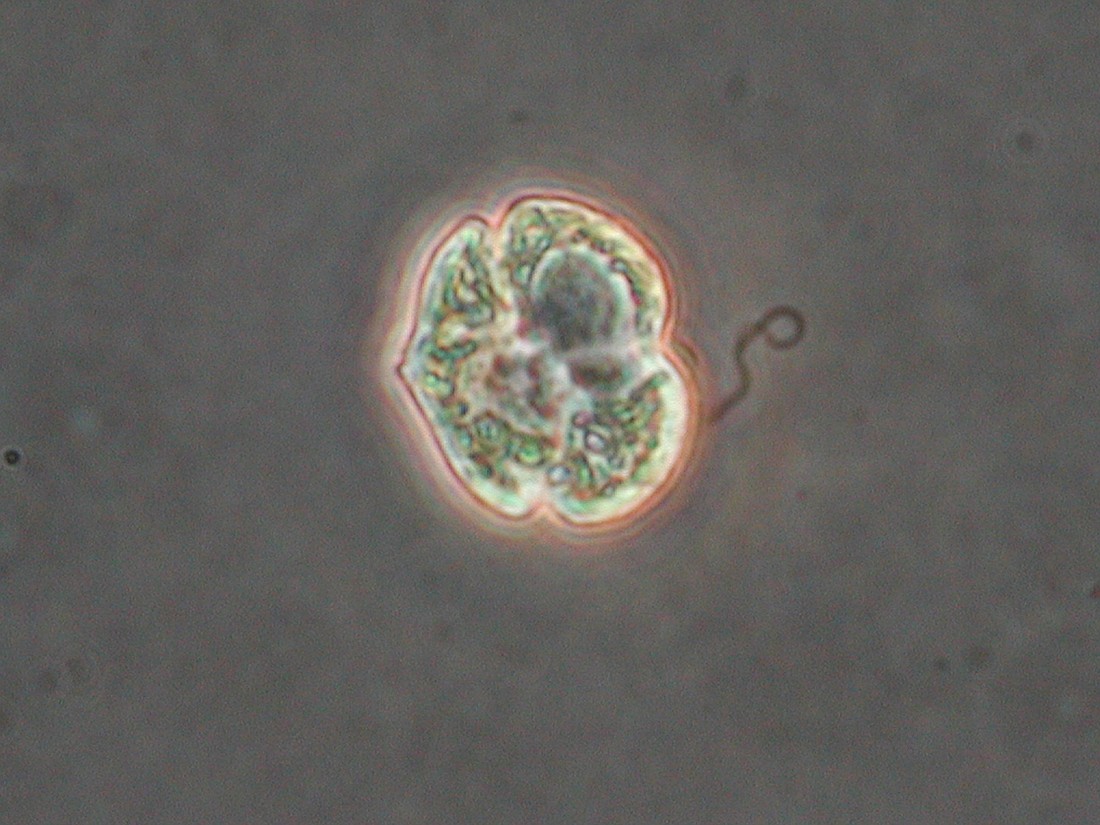- April 4, 2025
-
-
Loading

Loading

Mote Marine Laboratory scientists are looking at a new way to combat a longstanding problem – red tide.
Scientists Vince Lovko and Tracy Fanara are leading a new project that will continue efforts to reduce red tide effects on coastal communities, a release from Mote said.
The research project will explore whether filter-feeding animals and seaweeds can help alleviate the effects of red tide, which is an algal bloom caused by the microscopic organism, Karenia brevis.
Lovko will study the inhibitory effects of macro-algae on K. brevis, and he and Fanara will investigate if multiple organisms can potentially filter out K.Brevis cells from the water. These filter-feeding organisms are being grown on Mote’s “living docks,” which are artificial reef structures that can float under docks while supporting marine life, Mote’s release said.
“After a discussion with Dr. Patrick Rice at Florida Keys Community College, who was using these ‘Mini Reefs’ built by Ocean Habitats to improve water clarity in waterways, I thought, ‘since we know shellfish and other aquatic animals that may inhabit these docks accumulate the red tide toxin, we should experiment to determine the effectiveness of these living docks to reduce biotoxins produced by red tide, and therefore, determine the potential for reduction in human health effects in canal communities,” Fanara said in the release.
Currently, there is no proven way to eliminate red tide in large areas without harming natural ecosystems, Mote’s release said, however this study is looking at new ways to fight its presence.
Mote high school interns built the structures that are helping Mote work on an initial smaller lab project. These structures were placed in Sarasota Bay and are attracting colonizing and filter-feeding organisms such as barnacles, tube worms, oysters and others. Once in the lab, the structures will be split in two groups – half will be cleaned and the other half will be left with organisms as is. Then they will all be placed in separate tanks containing K. brevis and tested to compare cell counts of microscopic organism, Mote's release said. The purpose is to test the ability of the organisms on the structures to remove red tide.
“Ocean Habitats, a company that commercially produces 'living dock' structures called ‘Mini Reefs,’ has shown cleaner water and successful habitat restoration of canals in Marco Island," Lovko said in the release. "The habitat improvement resulted in the return of numerous fish species to the canals, and even dolphins that would come to feed on the fish. These artificial reefs could be used to potentially filter red tide out of limited volumes of water in a more natural way that does not use chemicals and helps to restore lost habitat.”
If Mote obtains the proper funding, a team in the fall will expand the study using larger dock structures, which will be tested on their ability to reduce red tide at a larger scale. Red tide can kill fish and other marine mammals,cause respiratory irritation in humans and neurotoxic shellfish poisoning.
If successful, Mote’s release said the team wants to transform this study into a community outreach initiative that would teach people who live along canals to purchase or build living docks.